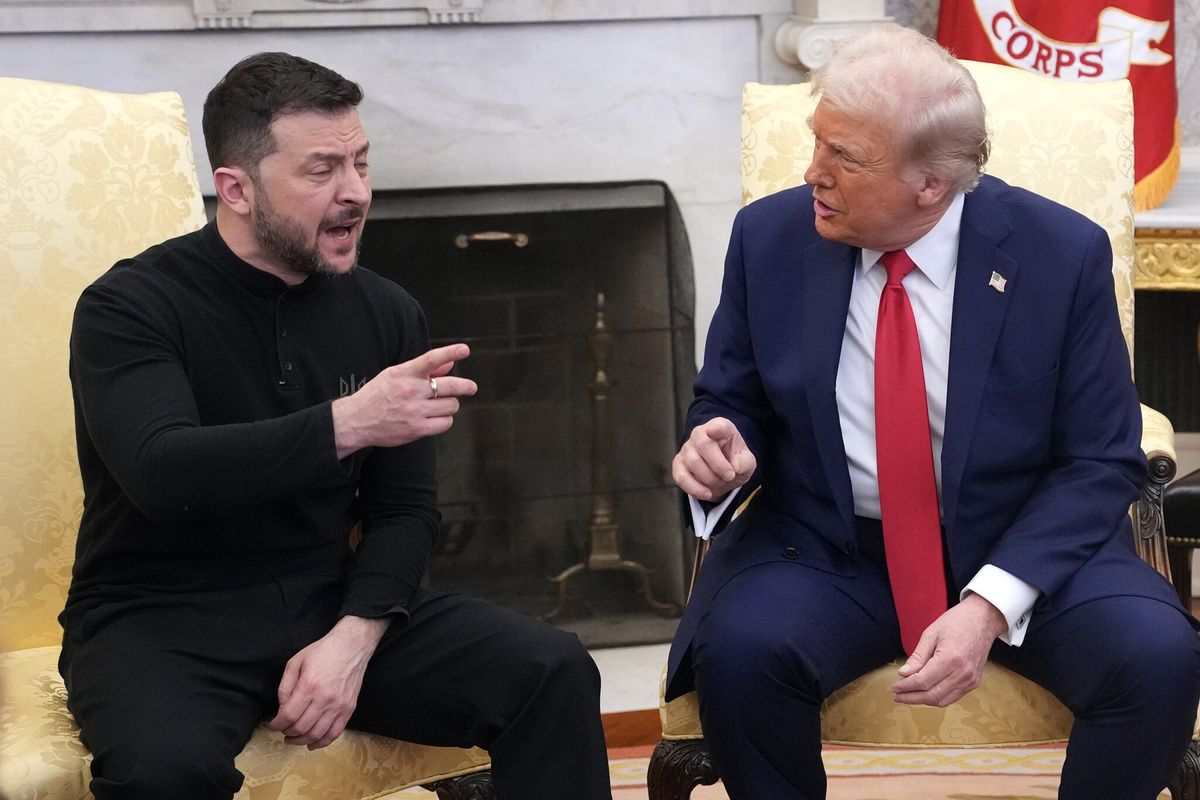Donald Trump is selling himself as a businessman, so let’s see how much he knows about budgets, particularly when it comes to defense.
In his September 7 speech on Pentagon issues, he said with regard to the 2001 Budget Control Act, “Under the budget agreement, defense took half of the cuts, even though it makes up only one-sixth of the budget. So they put it all in defense.”
That got great applause, but it is wrong: The cuts – or the annual budget caps established by Congress under the 2011 law – applied only to discretionary government spending, of which defense expenditures make up more than half, while discretionary non-defense spending, for education, health, agriculture, and other programs, make up the rest.
Trump ignored or may not know that discretionary spending is less than half the overall government budget.
The one-sixth share Trump mentioned referred to the defense share of the overall government budget made up of both discretionary and mandatory spending. The latter, which is larger than discretionary spending, is not capped by the 2011 budget act. Mandatory spending, required under existing laws, pays for such things as Medicare, Social Security, food stamps, and unemployment benefits.
Defense is only roughly 16 percent of that overall budget, so it’s inaccurate – and misleading – to say, as Trump did, that “they put it all on defense.”
Trump was reading his speech off a Teleprompter [a practice he once ridiculed, but no longer makes fun of], so there is no telling who actually wrote what he was saying. He ought to be asked about it.
Trump said he would ask Congress to remove the 2011 budget caps, and therefore the threat of sequester – the across-the-board budget cuts if caps are exceeded. He said he would also ask the legislators “to fully offset the costs of [his planned] increased military spending.”
The non-partisan Taxpayers Union last week estimated Trump’s “proposals would increase [defense] spending by at least $16 billion per year.” The group added, “There is uncertainty regarding elements of his plan that could drive up the ultimate price tag.”
I will talk more about the force increases he proposes, but look at where he expects to go to get revenue to offset the added costs.
Trump listed one potential source for new revenue as recovering improper government payments, which he said were estimated to exceed $135 billion per year. Sounds good, but it would require increased spending by agencies such as the Social Security Administration (SSA) to investigate and then seek to get return of such payments. SSA asked for $1.8 billion to fund such an effort in fiscal 2017 and said each dollar eventually could result in a return of $3 to $8 dollars. But it would be a long process.
Another source of funds for defense that Trump mentioned was in unpaid taxes, which he said was as high as $385 billion a year. That’s a 2006 estimate, and interestingly, the largest sector not paying, some $124 billion of the total, comes from businesses failing to report income, according to the Internal Revenue Service (IRS). Again, IRS would need additional investigative funds, which Republican Congresses in the past have cut back, in order to start a long-term process trying to get that money.
Of course Trump’s own proposed plan for cutting the tax on businesses will sharply reduce that area as a source of funds.
Trump also said, “We can also stop funding programs that are not authorized in law.” He said, “Congress spent $320 billion last year on 256 expired laws.” The problem there is many such “unauthorized” programs are still being funded by Congress under past years’ omnibus appropriations bills where Congress failed to pass annual authorization bills. For example, the State Department authorization bill has not passed Congress for the past 14 years, so that more than $10 billion of that “unauthorized” total from last year is the amount now being spent to fund operations of the State Department this year. You cannot get that money back.
Another questionable part of Trump’s alternate defense funding would come from “additional revenues from unleashing American energy.” He said the basis for that was a recent study by the Institute for Energy Research paper, an outfit partly funded by the Koch brothers, that claimed the U.S. government could gain as much as $36 billion annually “from increased energy production.”
That was based on opening all federal lands and waters offshore to drilling for oil or gas. But as the Congressional Budget Office pointed out, should such lands be opened up, much of that new revenue would go to the states. For example, opening the Arctic National Wildlife Refuge would increase revenues about $5 billion year, but between 50 percent and 90 percent of that money would go to the state of Alaska if “the authorizing legislation were similar to those in recent legislation,” according to the Congressional Budget Office.
It’s likely that Trump didn’t write this speech, but it does raise questions about the quality of the staff he is depending on for his facts.
Trump last week also continued to say U.S. allies will have to be paying more for defense. “I will also be requesting that all NATO nations promptly pay their bills, which many are not now doing,” he said to great applause. Remember, despite the fact that Trump got more applause saying, “They will do it. They’ll be happy to do it” if he were president, their additional spending will not come to the U.S. so it will not help pay for Trump’s additional military program.
What Trump is really talking about, though without showing any awareness, is NATO countries meeting an alliance goal, not the “requirement” that he called it, to spend two-percent of their GDP on defense.
Trump also again said, “I will be respectfully asking countries such as Germany, Japan, South Korea, Saudi Arabia to pay more for the tremendous security we provide them.” He has never explained what this may mean other than perhaps increasing the amount they already pay to cover costs of U.S. troops stationed in their countries.
It’s worth pointing out Trump has never mentioned the more than $3 billion the U.S. pays annually directly to Israel to subsidize that country’s defense budget, a figure which may go up over the next decade based on current negotiations.
Trump’s own proposal involves increasing the active Army to 540,000 from today’s planned 475,000; the Marine Corps to 36 battalions from today’s 23; the Air Force fighter/bomber force to 1,200 from today 1,113; and the Navy to 350 ships from today’s 276.
Why? He said his foreign policy would be “Peace Through Strength,” and in the case of each proposed force increase, he said either the current number of troops were “not enough” with no explanation, or it is the amount needed “to execute current missions” or the “minimum needed to deal with major contingencies.”
This from the candidate who early in this speech said of the Middle East, “The current strategy of toppling regimes with no plan for what to do in the day after only produces power vacuums that are filled simply by terrorists. Gradual reform, not sudden and radical change, should be our guiding objective in that region.”
There was no explanation what “gradual reform” means, but Trump has repeatedly said nation building was out.
I’m reminded of the lines from Shakespeare’s Macbeth:
"Life's but a walking shadow, a poor player
That struts and frets his hour upon the stage
And then is heard no more: it is a tale
Told by an idiot, full of sound and fury
Signifying nothing."











